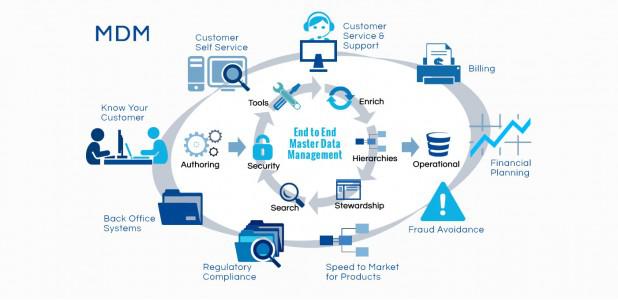Every organization has master data that needs to be managed through consistency and improved quality so as to continue functioning effectively and efficiently. They require business aspects and applications such as processes optimization, ERP systems, business intelligence, compliance with rules and regulations, and the ability to view a client in a single view. These seem to be complex goals. However, if an organization can make use of a good Master Data Management (MDM), it becomes easier to achieve these goals. Master data management can be defined as the tool, process or the technology that helps people to manage and coordinate data within an organization. Its main purpose includes providing consistent, accurate and complete data in between the organization and to relevant partners.
Important highlights
• As a business owner or manager, you need to know that MDM can be difficult not because of technical issues but because of political issues. This means that when you are getting started with master data management, you have to be prepared to make fundamental changes to your business processes.
• You also need to know the difference between creating master data and maintaining it. This is because it is not about investing a lot of money and time that will help you have a clean master data but the tools and processes you include.
• You can choose between an MDM that is a single domain or multi-domain, but this will depend on the technology that you are using. The good thing about the multi-domain MDM is that you will enjoy a reduced technology footmark, consistent data stewardship, lower cost of ownership, ability to share data across domains and high ROI.
Getting started with MDM
While it can be very tempting to want to start big from the beginning, it is better you start small, and with time you will achieve your ideal model. The reason for this is that many organization do not have clear structures and processes, data owners or system owners that can be synchronized with the MDM. Also, governance and management of MDM could be a little complex for the current functional departments and people to start using it big immediately. It is therefore advisable you start small and keep upgrading gradually. This will make role assigning and acceptance very easy as they functions and people enter into the new business environment.
Communication is key in all these transitions because MDM will lead to a revision of some roles and new roles will be created. Therefore consider involving everyone in the process so that they can feel responsible for improving master data quality and consistency. Everyone will feel motivated to do better.
Importance of MDM
• A master data holds information on products, customers and employees and this information helps the business to understand where it’s coming from and therefore define where it is going and how to reach its destination. Without this data, the business does not have a vision.
• With the increased level of globalization and complexities in business, it will be hard for a business to handle its assets data effectively. Therefore, it’s only a tool such as MDM that will help a business to operate effectively despite the complexities.
• There are many corporate scandals brought about by compliance issues. One of the reasons for these scandals is lack of a clean master data, but if they consider MDM as a solution for this, their master data will effectively support any new regulatory requirement.
MDM sounds like a complex phrase and when many people define it differently, the important thing to note that it is very important for improving master data consistency and quality.
Author Bio: Adrian Rubin is a freelance writer and Philly based photographer.











